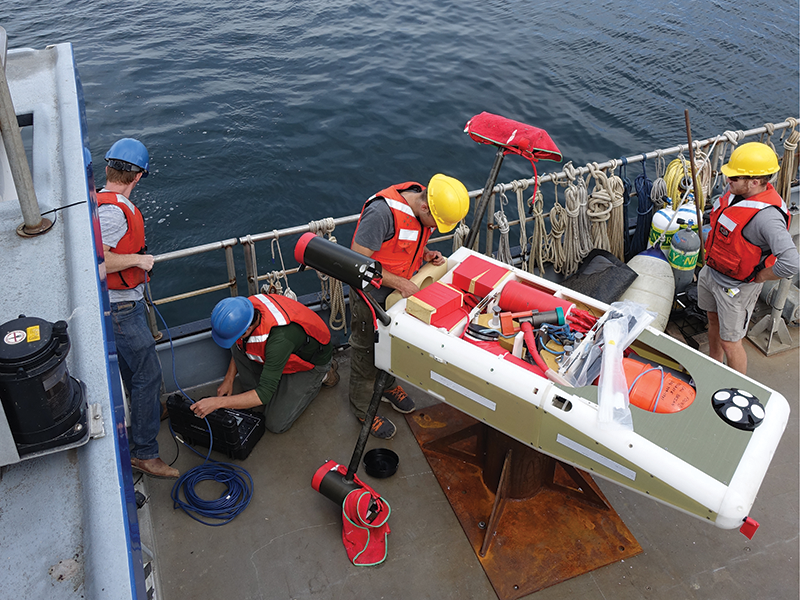
Scientists, engineers, and students are investigating all aspects of marine energy technologies. This effort relies on robust academic and industry partnerships. The goals are to advance marine energy technologies and enable adoption of generation capabilities at naval installations, where they will provide cost-effective, predictable, and reliable on-site power at multiple scales. |
| fundamental physics >> applied engineering | monitoring environmental effects | |||
|
A key component of this work is to investigate cross-flow turbines from lab-scale research and development to full-scale prototype testing and evaluation in the field. Collaborators in the UW Department of Mechanical Engineering discovered they could increase turbine power output by controlling the turbine’s speed within each rotation. That is, maximizing the time when the rotors are harvesting the flow at peak efficiency increases the power generated by over 50%. Two turbines can also work together. Rotors shed vortices into their wakes. Precise positioning and timing of their rotation coordinates the downstream turbine’s interaction with the vortices and increases the total power. APL-UW investigators will engineer prototype turbines capable of producing kilowatts of power and test them aboard a purpose-built vessel and at the Pacific Northwest National Laboratory facility at Sequim Bay. |
As turbines spin in strong current, is marine life at risk? The Adaptable Monitoring Package keeps eyes and ears on the environmental effects of marine energy conversion by putting the right mix of sensors near converters to capture the biology–technology interactions. AMP can be configured with hydrophones, an acoustic camera, a multibeam sonar, and stereo optical cameras. Sounds and images of fish, seals, and diving seabirds have been collected. These varied marine life encounters with energy converters are infrequent, so data must be processed continuously and saved only at the moment of interaction. So AMP's sensors can detect marine animals and trigger data capture automatically. AMP can be deployed as a standalone tripod lander or integrated with underwater structures. A fiber-optic cable connects AMP to its onshore power supply and computer control. An autonomous version is battery powered and has all its control and data acquisition software on board. A future version will be mated to a wave energy converter which will power the environmental monitoring sensors, control software, and data storage devices. |
|||
| adrift at sea, generating electricity | navigate | |||

An offshore, free-drifting power station was built and tested successfully in the open ocean by APL-UW engineers. The Wave Energy Buoy that Self-deploys converts surface wave energy to mechanical and electrical power anywhere in the open ocean. |
|
|||





